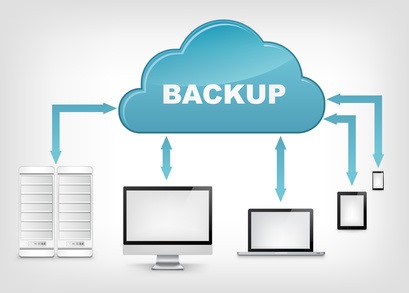ZipCloud gives you access to the Cloud wherever you are Browse and open all of your backed up files Backup your camera roll Share your photos with Facebook, Twitter or Email Plus lots more Product description. The Zip Cloud application is the fastest and most efficient way to access all of your data on the move. With Zip Cloud all of your data. Zip Cloud 18 20 w – 2,400 lm 40 w – 4,800 lm 70 w – 8,400 lm. Zip Cloud 24 20 w – 2,400 lm 40 w – 4,800 lm. Zip Cloud 36 40 w – 4,800 lm 80 w – 9,600 lm. What is ZipCloud? Simple, safe and secure cloud backup is finally here. With Zipcloud you can backup everything on your PC or Mac and then access anything via your mobile device on the go, meaning that not only will you ever lose data again, but you'll never have to be without it again.
Adware comes in many different forms, but much of it plays on our love of a bargain or a discount. ZipCloud is an example of that. Once installed on your Mac, it claims to find the best cloud storage deal for you and offers discount coupons and special deals. In reality, its goal is to persuade you to click on an advert so that the scammers behind it can make money.
Everything you need to know about ZipCloud
ZipCloud is an adware that pretends to find discounts for cloud storage, but instead displays intrusive adverts and may steal data such as your IP address and search queries.
It finds its way onto your Mac usually through the download managers used by popular software download sites like Softpedia and download.com.
ZipCloud is an application that allows users to store various files such as documents, videos, pictures, etc online. The application also offers automated backups and synchronization options through its cloud storage service. Certain features of the application, however, such as the generated advertisements may lead some users to no longer wish to have the application installed. ZipCloud offers a range of features designed to attract both standard computer users and those who require the heavier storage that businesses demand. ZipCloud offers the same range of features to both its business and standard users, and the primary difference between the packages is the amount of storage available.
Did you know?
While big software download sites themselves don’t deliberately distribute malware, the download managers they use are sometimes infiltrated by adware and potentially unwanted programs. And that means when you download a seemingly legitimate app from one of those sites, you risk also downloading malware.
Zipcloud Download
To prevent downloading and inadvertently installing ZipCloud, you should avoid using sites that use download managers. You should also be careful about where you download apps from in general, and what apps you choose to download. Don’t ignore a warning from macOS telling you that you’re trying to install an application that doesn’t come from the App Store or a trusted developer. Think carefully before you override the default settings in System Preferences to install the app.
How to remove the ZipCloud virus from your Mac
Step 1: Uninstall ZipCloud from Mac
The first step is to get rid of the app that you downloaded, along with anything named ZipCloud in your Applications folder. Drag them to the Trash and then empty it.
Next, go to the following locations in the Finder, by clicking on the Go menu and choosing “Go to Folder”. Once you’re there, look for any files named “zipcloud” and drag them to the Trash.
~/Library/Application Support/
~/Library/Caches/
~/Library/Logs/
~/Library/LaunchAgents/
Select MongoDB from the dropdown. There are two ways to connect to MongoDB: Using the Metabase fields to input your connection details. Pasting your connection string. Using Metabase fields. The default way to connect to MongoDB is to fill out your connection details in the fields Metabase provides: Host; Database name; Port; Username; Password. To make sure you are using the correct connection configuration: Log into your Atlas cluster Select the cluster you want to connect to, and click Connect. Click Connect Your Application. Select Java and 3.6 or later. The resulting connection string has the relevant information to provide to. 
~/Library/Saved Application State/
Tip: You can remove ZipCloud, or any other app, along with all the files that were installed with it, very quickly using a dedicated antivirus. Lots of Mac users have found the Malware Removal tool in CleanMyMac X very useful and a much quicker way of uninstalling apps than the manual method above. Download the app (it's free to download), go to the Malware Removal tab and let it get rid of ZipCloud virus completely.
Step 2: Remove ZipCloud browser extensions from all your browsers
Safari
- Open Safari.
- Click Safari in the top menu, then choose Safari Extensions.
- Look through the list and click on any extensions that you distrust. Also, check the description of the extension. If you don’t remember installing it, click Uninstall.
- Repeat until you’ve removed all the extensions you don’t want.
Chrome
- Open Chrome.
- Click on the 3-dot 'hamburger' icon in the upper right corner.
- Select More Tools and choose Extensions from the menu that appears.
- Look over the extensions in the browser window and click Remove on any that you don’t recognize.
Firefox
Zipcloud Customer Service
- Launch Firefox.
- Click the 3-line (hamburger) icon at the top right corner.
- Choose Add-ons
- Click the Extensions tab and remove on any you don’t recognize.
Tip: CleanMyMac X can remove extensions from Safari at the click of a button. It can also deal with Login Items and Launch Agents, which may install malware on your Mac.
ZipCloud pretends to be helpful, by showing you discounts and deals for cloud hosting sites. In reality, however, it’s displaying intrusive adware as a way of making money for the scammers behind it. This adware uses resources on your Mac, and could slow it down or deplete the battery. It may also steal data like your IP address, so you should remove it as soon as you discover it. Removing it is fairly simple using the steps above, and even easier if you use CleanMyMac X to help.
ZipCloud is a cloud storage service that has an accompanying client application. The application allows you to back up your files and photos to the cloud, coming with both free and paid plans for expanded storage space.
ZipCloud has a number of features that allow user flexibility, such as syncing a number of different devices to the same account, as well as accessing cloud storage through a mobile device.
If you are considering switching to a new cloud hosting service or simply no longer need to sync files from your devices with ZipCloud because your free account has been filled to its maximum capacity, you might want to uninstall the ZipCloud client. If that's the case, this article will give you a brief guide on how to uninstall the application on both Win 10 PC and Mac.
If you're uninstalling ZipCloud from a Windows 10 PC, follow these steps:
Zipcloud App
Right click ZipCloud's system tray icon and exit the application.
Open your start menu and click the gear-shaped 'Settings' icon.
In the new window that comes up, click on 'Apps'.
Find ZipCloud in the list of installed applications, somewhere near the bottom, and click it.
Click the 'Uninstall' button that shows up and follow the onscreen instructions to finish the uninstall process
If you are uninstalling ZipCloud from a Mac computer, follow these steps:
Http://zipcloud.com
Close ZipCloud.
Open your Applications folder by using the system dock or by using Finder.
Drag and drop the ZipCloud application icon on your Trash.
Empty your Trash to complete the uninstall process.

Zipcloud Complaints
Even if you uninstall your ZipCloud application, this will not interfere with your already stored and uploaded files. This will only prevent you from using the features and automation the client application provides. Your previously stored files should still be accessible through the web interface or through a mobile device.
Cloud Zip
